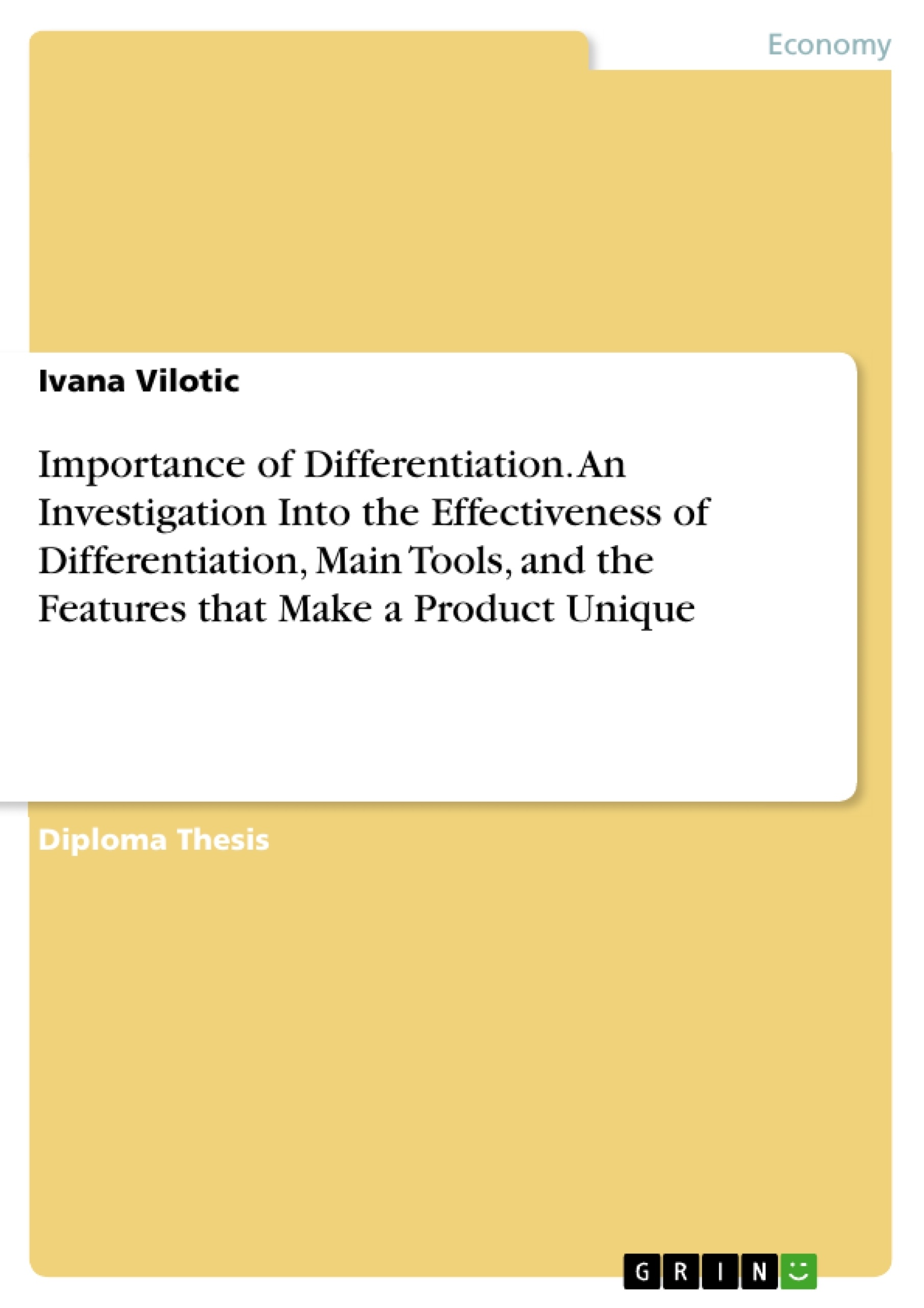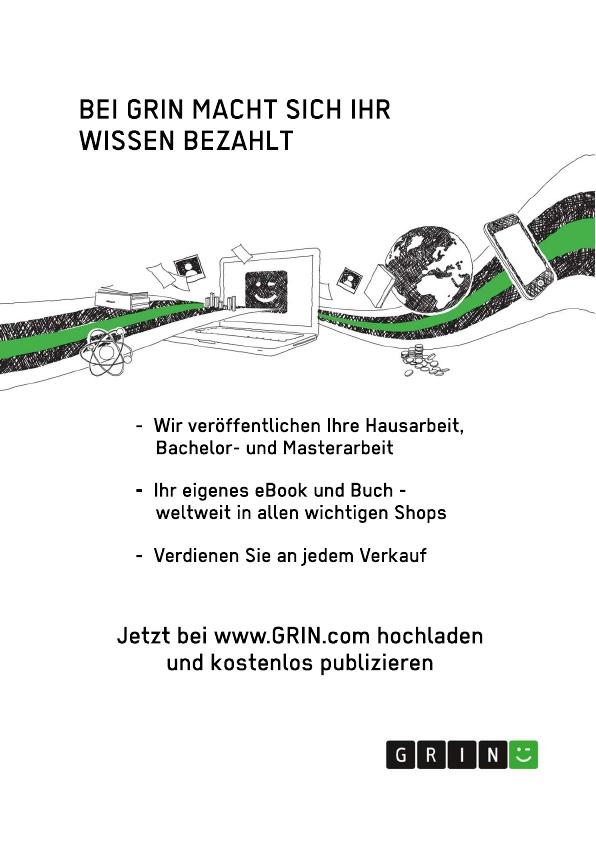This paper analyzes the effectiveness of differentiation and the strategy’s main instruments to further refer them to the exploration of the uniqueness of cruise tourism product features, and best case procedures regarding effective differentiation strategies in tourism sectors. Having used the combination of primary and secondary sources, the research concludes that differentiation is regarded as an effective marketing tool, preventing competition exclusively based on a product’s price. It is reported that, as products converge in terms of their features, the creation of a USP becomes more essential.
Different levels of a product unveil various possibilities for differentiation; and it is suggested that branding and positioning are used as applicable differentiation instruments. Although differentiation based on the core product is found out to be a common way of distinguishing cruise line products, differentiating through value added features and the product’s service component are used more frequently. The findings further reveal that marketing principles are used to differentiate tourism products. Due to the tourism industry’s ‘me-too’ market nature, branding is considered to be a valuable soft differentiation tool. Market research, brand awareness measurement, and conjoint-analyses are useful means for quantifying the product in the eyes of the customer; additionally, pricing and conditions systems can differentiate a tour operator’s product in due consideration of booking periods and the number of participants.
Table of Contents
- 1. Introduction
- 1.1. Rationale of the Topic
- 1.2. Aim and Objectives
- 1.3. Methodology
- 1.4. Chapter Outline
- 2. A Literature –based Investigation Into the Effectiveness of Differentiation
- 2.1. Effectiveness and the Benefits of Differentiation
- 2.1.1. Differentiation: The Concept
- 2.1.2. Differentiation: A Definition
- 2.1.3. The Concept of the Unique Selling Proposition
- 2.2. A Differentiation Strategy's Main Categories, Approaches, and Tools
- 2.2.1. Principles of Differentiation
- 2.2.2. Differentiation Categories
- 2.2.3. Differentiation Instruments
- 2.3. Brief Overview of the Cruising Industry
- 3. Primary Research: The Methodology
- 3.1. Research Philosophy: Interpretivism
- 3.2. Research Approaches: Deductive and Inductive Theory
- 3.3. Applied Research Strategy: Qualitative Research
- 3.4. Applied Research Method: In-depth Interviews and Observational Methods
- 3.4.1. General Considerations
- 3.4.2. Limitations
- 4. Presentation and Analysis of Research Findings
- 4.1. Objective One: Effectiveness and the Benefits of Differentiation
- 4.1.1. Findings, Analysis, and Interpretation
- 4.1.2. Conclusion
- 4.2. Objective Two: Clarification of a Differentiation Strategy's main Categories, Approaches, and Tools
- 4.2.1. Findings, Analysis, and Interpretation
Objectives and Key Themes
This diploma thesis investigates the effectiveness of differentiation strategies, particularly within the cruise tourism industry. It aims to explore the main tools and features that contribute to a product's unique selling proposition (USP). The research utilizes a combination of primary and secondary sources to achieve its objectives.
- Effectiveness of Differentiation Strategies in Tourism
- Key Tools and Instruments for Differentiation
- Creating a Unique Selling Proposition (USP)
- Differentiation in the Cruise Tourism Industry
- Role of Branding and Positioning in Differentiation
Chapter Summaries
1. Introduction: This introductory chapter sets the stage for the entire thesis. It establishes the rationale behind studying differentiation in the tourism sector, specifically focusing on the cruise industry. The chapter clearly defines the aim and objectives of the research, outlining the specific questions the study seeks to answer. It details the methodology employed, explaining the research approach (qualitative, using in-depth interviews), and provides a brief overview of the structure of the thesis, guiding the reader through the subsequent chapters. The introduction lays a solid foundation by clearly stating the scope and purpose of the research.
2. A Literature –based Investigation Into the Effectiveness of Differentiation: This chapter provides a thorough literature review on differentiation strategies. It examines the effectiveness and benefits of differentiation, defining the concept and exploring the significance of a unique selling proposition (USP). The chapter systematically categorizes the main approaches and tools used in differentiation strategies, providing a theoretical framework for understanding how businesses can distinguish themselves from competitors. It also includes a brief overview of the cruising industry, establishing the context for the subsequent empirical research.
3. Primary Research: The Methodology: This chapter details the research methodology used in the thesis. It explains the chosen research philosophy (interpretivism), justifying its selection in relation to the research questions. The chapter outlines the research approaches (deductive and inductive) and strategy (qualitative research using in-depth interviews and observational methods). It provides a justification for this approach and explicitly discusses its limitations, acknowledging any potential biases or constraints affecting the research findings. This ensures transparency and allows readers to critically assess the validity of the conclusions.
4. Presentation and Analysis of Research Findings: This chapter presents and analyzes the findings from the primary research, organized around the stated objectives. It systematically addresses each objective, detailing the collected data, providing relevant interpretation, and drawing meaningful conclusions. The analysis connects the primary research findings with the theoretical framework established in the previous chapters, demonstrating how the empirical evidence supports or challenges existing theories of differentiation in the context of the cruise industry. The chapter avoids prematurely presenting the overall conclusions of the research, leaving this for the final chapter (which is excluded per the instructions).
Keywords
Differentiation, cruise line, branding, unique selling proposition (USP), marketing strategy, tourism, qualitative research, in-depth interviews, value-added services.
Frequently Asked Questions: A Literature-Based Investigation Into the Effectiveness of Differentiation Strategies in the Cruise Tourism Industry
What is the overall topic of this research?
This research investigates the effectiveness of differentiation strategies, specifically within the cruise tourism industry. It explores the tools and features contributing to a product's unique selling proposition (USP).
What are the main objectives of this study?
The study aims to explore the effectiveness of differentiation strategies in tourism, identify key tools and instruments for differentiation, understand the creation of a unique selling proposition (USP), analyze differentiation in the cruise tourism industry, and examine the role of branding and positioning in differentiation.
What methodology was used in this research?
The research employs a mixed-methods approach. It includes a literature review to establish a theoretical framework and primary research using qualitative methods, specifically in-depth interviews and observational methods, to gather empirical data.
What is the research philosophy?
The research philosophy adopted is interpretivism, which focuses on understanding the meaning and interpretation of experiences and perspectives.
What are the key chapters and their contents?
Chapter 1 (Introduction): Sets the context, defines the research aim and objectives, outlines the methodology, and provides a chapter overview. Chapter 2 (Literature Review): Examines existing literature on differentiation strategies, including definitions, categories, tools, and the concept of a USP, with specific reference to the cruise industry. Chapter 3 (Methodology): Details the research approach (qualitative), the chosen methods (in-depth interviews and observations), and justifies the chosen methodology, acknowledging limitations. Chapter 4 (Findings and Analysis): Presents and analyzes the results of the primary research, connecting them to the theoretical framework established in previous chapters.
What are the key findings (in summary)?
The detailed findings are presented in Chapter 4. The summary provided only offers a high-level overview of the structure of the analysis, organized around the stated objectives of the research.
What are the key limitations of the research?
Chapter 3 explicitly addresses the limitations of the chosen research methods (qualitative, in-depth interviews, and observations). These limitations are acknowledged to ensure transparency and allow for a critical assessment of the research.
What are the keywords associated with this research?
Differentiation, cruise line, branding, unique selling proposition (USP), marketing strategy, tourism, qualitative research, in-depth interviews, value-added services.
What type of data was collected?
The research uses both secondary data (from the literature review) and primary data collected through in-depth interviews and observational methods.
For whom is this research intended?
This research is intended for academic use, focusing on the analysis of themes related to differentiation strategies in the cruise tourism industry.
- Arbeit zitieren
- Ivana Vilotic (Autor:in), 2011, Importance of Differentiation. An Investigation Into the Effectiveness of Differentiation, Main Tools, and the Features that Make a Product Unique, München, GRIN Verlag, https://www.grin.com/document/179391




